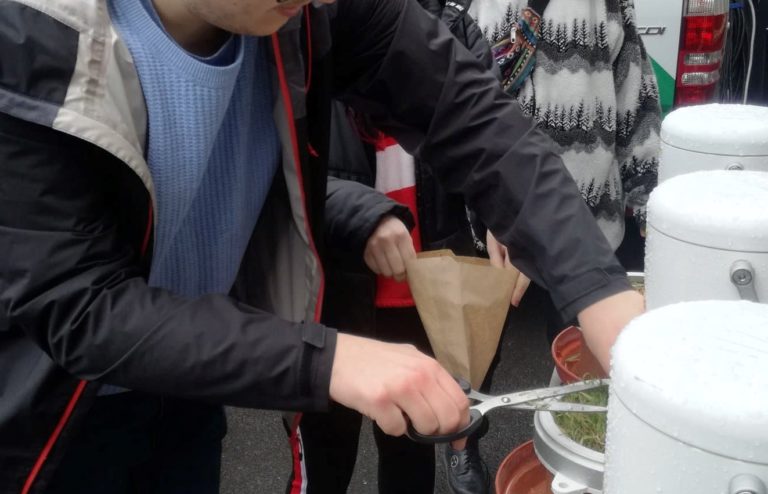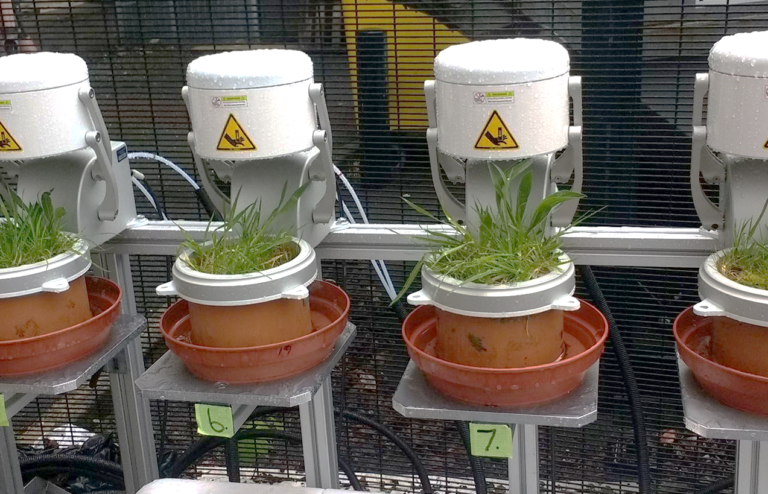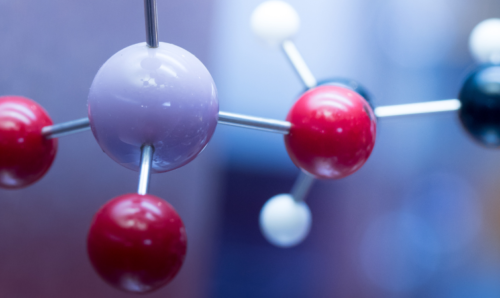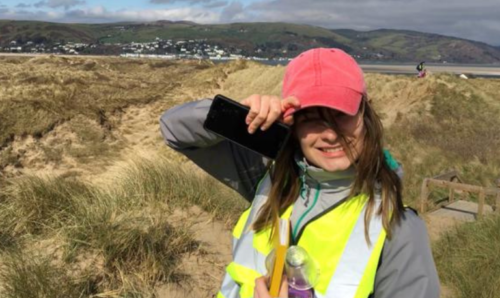Environmental Science Field Week
Student experience 1st July 2019
At the end of April 2019, second year Environmental Science undergraduates took part in “field week”. Klaudia Jedyka decided to share her findings with us to provide insight into the student experience.

The Project
This year, instead of a mandatory field trip, we had a field week: a week in which we carried out multiple lab practicals, designed and carried out our own experiment, and analysed our own data.
On Monday and Tuesday each group carried out two experiments in a day. My group looked at food dye remediation using wood chips (somehow successful!), measuring aerosol concentrations, how iron affects movement of toxic metals through water and how water flows through different sized sand. These practicals were a chance for us to get familiar with using specialist equipment, as well as a chance to analyse our own results.
Midweek Decisions
On Wednesday, we had to choose the projects we would work on until Friday. Multiple lecturers presented what topics they’d be covering. Some of these included an environmental impact assessment of a possible biofuel plant in the Peaks, methane and CO2 emissions from peat bogs in the Peaks and aerosol measurements around Manchester. I chose to work on soil related greenhouse gas emissions.
We sat down as a group to bounce around some ideas for the specifics of our project. We chose to investigate whether carbon sequestration through afforestation would increase greenhouse gas emissions from soil, due to the stimulation of emissions from tree roots. After this, we had about an hour to make a presentation describing our project, which we then presented in front of the whole class. Our main aim was to find out if the addition of a simulated root exudate would change emissions of CO2 and N2O from the soil. We also wanted to find out if the composition of the exudate (either dominated by amino acids, dominated by sugars, or water as the control) would have an effect on CO2 and N2O emissions from the soil.
Ready, Set, Experiment
We spent Thursday preparing our experiment – this was the first time any of us got to carry out an experiment we had designed ourselves, and I have to admit, it was really fun. We spent the day at the GasLab van, which is stationed outside the Michael Smith building. The things we did that day included:
- Deciding on the composition of, and preparing the treatments that simulated root exudate.
- Cutting grass, to ensure any measurements we get are a result of soil respiration, rather than vegetation. The grass was then weighed to measure the productivity of each pod (this was needed to account for any variability).
- Measuring humidity, temperature, conductivity of the soils.
- Applying the treatments.
- Learning about statistics.



Findings and Analysis
Friday was time for data analysis. It was pretty exciting watching our data show up on a graph! And confusing trying to work out what went where, and what we needed, and how and why and what.
The week felt like a mini dissertation and it was a great opportunity to see what goes into carrying out research. Although some parts were confusing, and some a little tedious, actually caring about the outcome of the study made it all a lot more interesting. Big shout out to my group and to Professor David Johnson who overlooked this project and patiently dealt with our moments of confusion. Now, time to write a 3500 word report!

Klaudia Jedyka is a second year Environmental Science student at the University of Manchester.
Follow @GasLabUom and @SoilEcolUoM on Twitter.




Leave a Reply